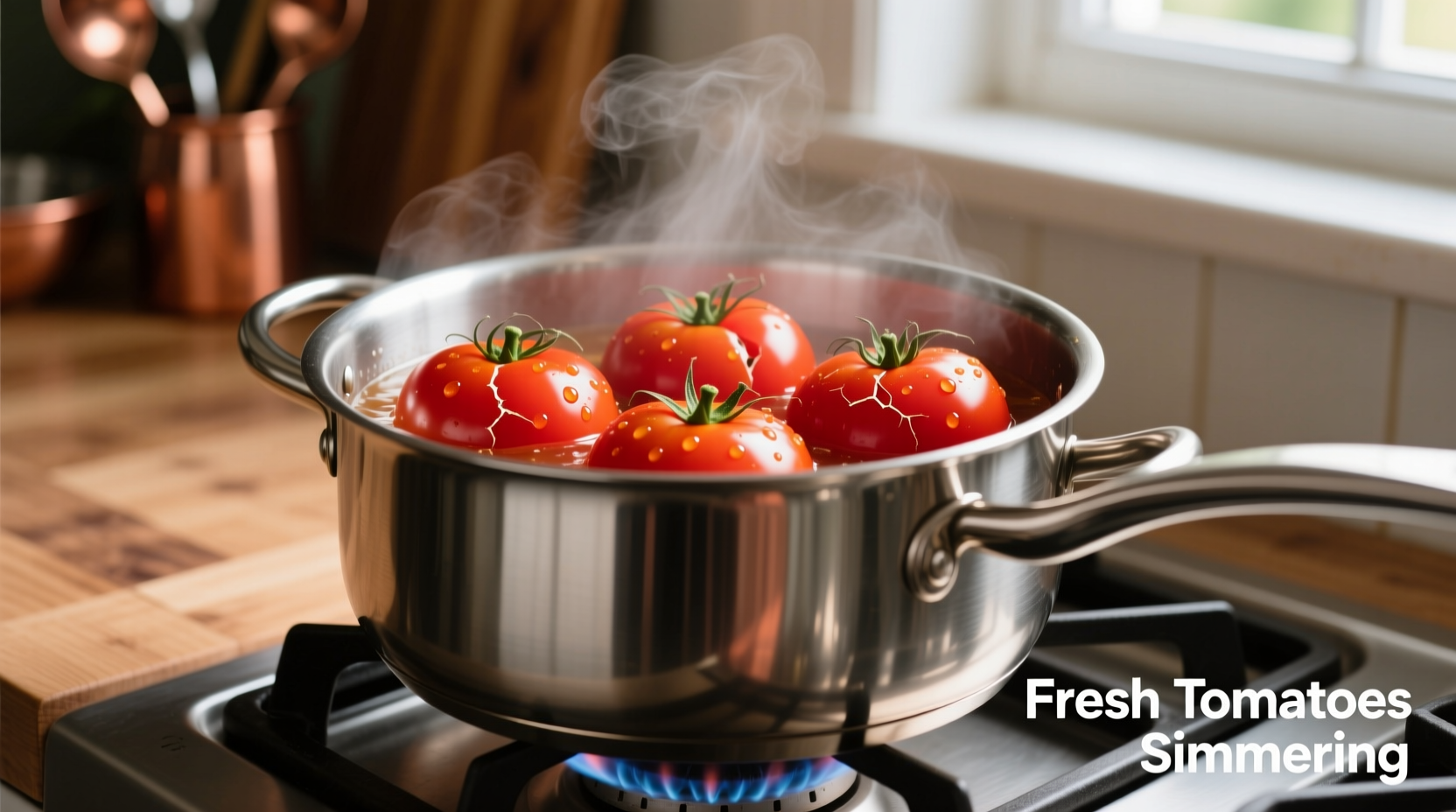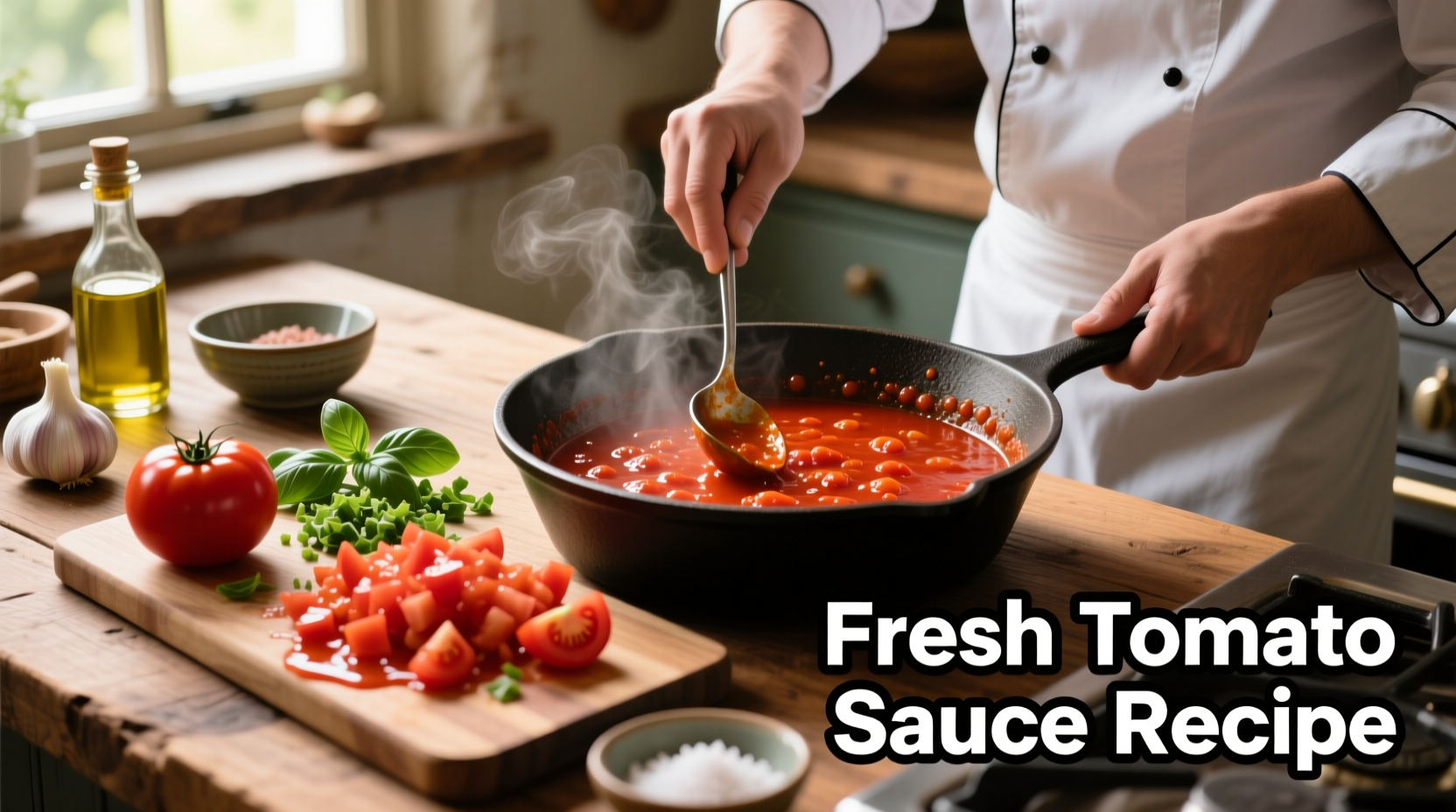Make perfect fresh tomato sauce in 45 minutes with just 6 simple ingredients: ripe tomatoes, garlic, olive oil, basil, salt, and a pinch of red pepper flakes. This authentic method preserves summer flavors without added sugar or preservatives.
Why This Fresh Tomato Sauce Recipe Works Every Time
Creating vibrant, restaurant-quality tomato sauce at home isn't complicated when you understand the science behind the ingredients. Unlike store-bought versions loaded with preservatives and sugar, this fresh tomato sauce recipe harnesses natural pectin and acidity for perfect texture and flavor balance. Professional chefs rely on this same technique whether preparing Sunday gravy or quick weeknight pasta.
Your Fresh Sauce Planning Checklist
Before you start cooking, gather these essentials for success:
- Tomato selection: Choose ripe Roma or San Marzano varieties for optimal sauce consistency
- Timing: Allow 15 minutes prep + 30 minutes cooking (45 minutes total)
- Yield: Makes 4 cups (enough for 8 servings of pasta)
- Equipment: Heavy-bottomed pot, immersion blender (optional), wooden spoon
| Tomato Variety | Best For | Sauce Yield per Pound | Flavor Profile |
|---|---|---|---|
| Roma | Classic Italian sauces | 2 cups | Rich, balanced acidity |
| San Marzano | Chef's choice for premium sauce | 2.5 cups | Sweet with low acidity |
| Beefsteak | Quick weeknight sauces | 1.5 cups | Bright, tangy |
Step-by-Step Fresh Tomato Sauce Preparation
Ingredient Prep (10 minutes)
Wash 2 pounds of tomatoes and remove cores. Score an "X" on the bottom of each tomato. Blanch in boiling water for 30 seconds, then transfer to ice water. The skins will peel off easily. Chop tomatoes roughly, reserving all juices.

Cooking Process (30 minutes)
- Heat 3 tablespoons extra-virgin olive oil in heavy pot over medium heat
- Add 3 minced garlic cloves and 1 teaspoon red pepper flakes, sauté 1 minute until fragrant (don't brown)
- Pour in tomatoes with all juices and 1 teaspoon salt
- Simmer uncovered 25-30 minutes, stirring occasionally
- Remove from heat, stir in 8 fresh basil leaves (torn)
- For smoother texture, blend with immersion blender (optional)
Common Sauce Problems Solved
Even experienced cooks encounter these issues. Here's how to fix them:
- Too watery? Continue simmering 5-10 minutes to reduce. Never add flour or cornstarch - it alters flavor.
- Too acidic? Add a small pinch of baking soda (1/16 teaspoon), not sugar. This neutralizes without adding sweetness.
- Burnt bottom? Immediately transfer to clean pot. The unburnt portion remains usable if you act quickly.
Preserving Your Fresh Tomato Sauce
Enjoy immediate or preserve for later use:
- Refrigeration: Store in airtight container for up to 5 days
- Freezing: Portion into ice cube trays, then transfer to freezer bags (keeps 6 months)
- Canning: Follow USDA guidelines for pressure canning (requires pH testing below 4.6)
According to the National Center for Home Food Preservation, properly canned tomato sauce maintains nutritional value and flavor for 12-18 months when processed at 11 pounds pressure for 20 minutes (pint jars). Always test pH levels when canning to prevent botulism risk - fresh tomatoes naturally range from 4.3-4.9 pH, but adding lemon juice ensures safety.
Three Delicious Variations to Try
Customize your sauce for different dishes:
- Creamy tomato basil: Stir in 1/4 cup heavy cream at the end
- Puttanesca style: Add 2 tablespoons capers, 1/4 cup olives, and 3 anchovy fillets
- Garden vegetable: Sauté 1/2 cup diced carrots and celery before adding tomatoes
When This Method Works Best
This fresh tomato sauce technique shines during peak tomato season (July-September) when tomatoes are vine-ripened. It's less effective with underripe grocery store tomatoes in winter months. For year-round quality, freeze summer tomatoes or use high-quality canned San Marzanos as your base during off-season.
The evolution of tomato sauce in Italian cuisine demonstrates why technique matters. Originally introduced to Europe in the 16th century, tomatoes weren't used in sauces until the late 1700s. Early recipes required hours of cooking to break down tough varieties. Modern heirloom tomatoes need less time, explaining why traditional 3-hour simmering methods often overcook today's delicate produce.
Perfect Pairings for Your Fresh Sauce
Match your sauce to the perfect pasta shape:
- Spaghetti: Classic pairing for smooth sauces
- Penne: Holds chunkier sauces in ridges
- Rigatoni: Ideal for meat-infused versions
- Fettuccine: Best with cream-enriched sauces











 浙公网安备
33010002000092号
浙公网安备
33010002000092号 浙B2-20120091-4
浙B2-20120091-4